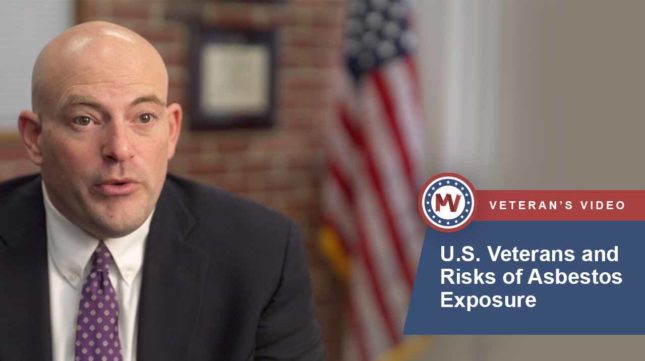Asbestos exposure is the single proven cause of mesothelioma, a cancer that affects the linings of the lungs, abdomen, heart, or testicles. Working in a high-risk occupation can increase your chances of developing mesothelioma. However, additional mesothelioma risk factors may also play a role.
Mesothelioma Risk Factors Explained

Exposure to asbestos is the only risk factor directly linked to mesothelioma. The length and concentration of the exposure play a role in whether someone gets this cancer later in life. People who were exposed to asbestos for several years are at greater risk of getting mesothelioma. Concentration is important, too. The risk is higher when there is more asbestos in the air.
However, research has shown that other mesothelioma risk factors may be involved in determining whether someone develops this rare cancer. For example, if you had a genetic disposition to develop mesothelioma, this would theoretically put you at higher risk than others if you were also exposed to asbestos.
Indirect risk factors like these haven’t been firmly established, but they could help explain why some people with no history of asbestos exposure are diagnosed with mesothelioma.
Other indirect mesothelioma risk factors include:
- Age
- Gender
- Erionite exposure
- Radiation exposure
- SV40 virus (also known as simian virus 40)
- Taconite exposure
Asbestos-related illnesses and mesothelioma were exceedingly rare before the 1900s. This was when companies and industries began using more asbestos.
The mineral was incorporated into many building materials, such as bricks and insulation. Companies produced and sold hundreds of thousands of tons of asbestos-containing products for a large portion of the 20th century.
Occupational Asbestos Exposure
People working in certain occupations have a higher risk of asbestos exposure than others. Trades that have historically used asbestos range from manufacturing and construction to mining and shipbuilding.
Some of the top professions at risk for mesothelioma include:
- Aircraft mechanics
- Asbestos miners
- Automotive workers
- Boilermakers and operators
- Construction workers
- Electricians
- Home renovators
- Insulators and insulation manufacturers
- Railroad workers
- Shipyard workers
Are you a veteran with mesothelioma who worked in a high-risk trade? Request your copy of our Free Veterans Packet to learn what help is available to you.
Secondhand Asbestos Exposure
Employees in these trades aren't the only ones at risk of mesothelioma. Their families can also be exposed to asbestos secondhand. For example, a miner who worked with or near asbestos could come home with tiny fibers coating their work clothing. These fibers could then be unknowingly inhaled or ingested by a spouse, child, or other family member.
Military Asbestos Exposure
All branches of the military used asbestos in some form from the 1930s to the 1980s. For example, the U.S. Navy used asbestos to insulate all their ships and submarines.
As a result, many Navy personnel (especially shipbuilders and submariners) were later diagnosed with mesothelioma. In fact, U.S. military veterans make up one-third of all mesothelioma cases because of the military's widespread asbestos use.
Video Summary: In this video, VA-accredited attorney Eric Hall explains why U.S. veterans are at risk of asbestos-related diseases like mesothelioma. He also breaks down how affected veterans can access military benefits and medical treatment. Call (877) 450-8973 to get started. View Transcript
Veterans who served in the military between the 1930s and the 1980s were likely exposed to asbestos while they were on active duty. Usually, if you've developed an asbestos-related disease, you developed that disease because you had an excessive amount of exposure to asbestos.
If a veteran believes they were exposed to asbestos while serving in the military, we encourage them to call the Mesothelioma Veterans Center so that we can work together to help them file for VA benefits.
The VA will recognize any asbestos-related disease as long as your asbestos exposure happened while you were on active duty in the military.
In addition to VA benefits, the Mesothelioma Veterans Center can connect veterans with world-renowned physicians and nurses on staff that can answer any of your treatment questions. We encourage veterans to call and find out how we can help them.
Veterans who had the highest mesothelioma risk include:
- Aircraft mechanics
- Electricians
- Machinists
- Naval yard workers
- Pipefitters
- Shipbuilders
- Tank mechanics
Order our Free Veterans Packet today to learn more about military asbestos exposure and how to get help if you've been diagnosed with mesothelioma.
Known Asbestos Exposure Risks
Your risk of developing mesothelioma grows as your exposure to asbestos increases. Several factors can increase your risk of asbestos exposure.
Some of the most well-known asbestos risk factors include:
- Working at an asbestos mine or asbestos processing plant: Asbestos is friable. This means it breaks apart and becomes airborne easily. Even with protection, asbestos can be found on clothing and inhaled.
- Working in construction or automotive factories: Asbestos is found in insulation used in cars, homes, and other buildings. While the use of asbestos in these areas has decreased, older buildings and cars still contain asbestos. Without protective equipment, workers can easily inhale airborne fibers from these materials.
- Working on a military ship or in military facilities: Submarines and ships were heavily insulated with asbestos to prevent fires. The military used asbestos in barracks and other buildings for similar reasons. Everyone who came in contact with the insulation may have inhaled asbestos fibers.
- Living near an asbestos mine: Anyone who lives in a residential area near an asbestos mine is at risk. Wind can carry airborne fibers to nearby homes. People in these areas may be exposed to asbestos fibers whenever they go outside. Asbestos from nearby mines can also contaminate drinking water.
- Completing home renovations: Professional renovators, as well homeowners who choose to do this work themselves, are at risk of asbestos exposure. Everyone must take caution when working with older materials that may have asbestos in them.
Other Mesothelioma Risk Factors
Not everyone who is exposed to asbestos gets mesothelioma. Some people are at a greater risk than others.
Risk factors for developing mesothelioma include:
- BAP1 gene mutation: People born with genetic changes in the BAP1 gene are at a higher risk of getting mesothelioma if exposed to asbestos. There are lower rates of mesothelioma patients without this mutation.
- Exposure to zeolites: Zeolites are a type of mineral related to asbestos chemically. For example, erionite is a mineral found in the dirt and rocks in certain parts of Turkey. People living in these areas can get mesothelioma without asbestos exposure.
- Increasing age: The risk of mesothelioma grows as people get older. About two-thirds of all people with mesothelioma are at least 65 years of age. This is partly because it takes decades for mesothelioma to develop.
- Injections of thorium dioxide: This is a radioactive contrast dye used in X-ray procedures before the 1950s. Its brand name was Thorotrast. It was discontinued after people learned it caused cancer. Some people are still at risk of developing mesothelioma because of long-ago exposure to Thorotrast.
- Male gender: Men are four times more likely than women to develop mesothelioma. This is likely because more men are exposed to asbestos in the workplace.
- Radiation exposure: People who have had radiation therapy may have damaged cells. Radiation is known to cause changes in a cell's DNA structure. The mutation may lead to mesothelioma in some of these individuals.
- SV40 virus: Simian virus 40 (SV) is a monkey-related virus. Researchers have found that viruses can affect the DNA inside cells, leading to different types of cancer. People with SV40 have a higher risk of mesothelioma without asbestos exposure. Up to 30 million polio vaccine injections between 1955 and 1963 were contaminated with SV40.
Get Help for Asbestos Exposure
Knowing the risk factors of mesothelioma may give patients some insight into where their disease came from. In most cases, the greatest risk factor is occupational asbestos exposure.
Here are the key points to remember about mesothelioma risk factors:
- Breathing asbestos fibers is the main risk factor.
- Genetic factors may have increased your mesothelioma risk.
- Men, military veterans, and trade workers have the highest rates of asbestos exposure.
Mesothelioma patients are victims and shouldn’t hesitate to get help. Being aware of your asbestos exposure history is crucial for getting access to health care and compensation. Asbestos trust funds and VA benefits can help you pay for treatment and other expenses.
If you or a loved one is a veteran who's been diagnosed with mesothelioma, contact us to learn what free benefits are available.
FAQs About Mesothelioma Risk Factors
Who is prone to mesothelioma?
Mesothelioma is most commonly found in people over the age of 65 who have been exposed to large quantities of asbestos over an extended period of time.
Military veterans and civilians who worked in industries that relied heavily on asbestos-containing products, such as construction, shipbuilding, and auto repair, are at a higher risk of developing mesothelioma.
People with family members who were exposed to asbestos may also have an increased risk through secondhand exposure.
Does everyone exposed to asbestos get mesothelioma?
No, not everyone who is exposed to asbestos will develop mesothelioma later in life. However, the risk of developing mesothelioma increases with the amount and length of exposure to asbestos.



